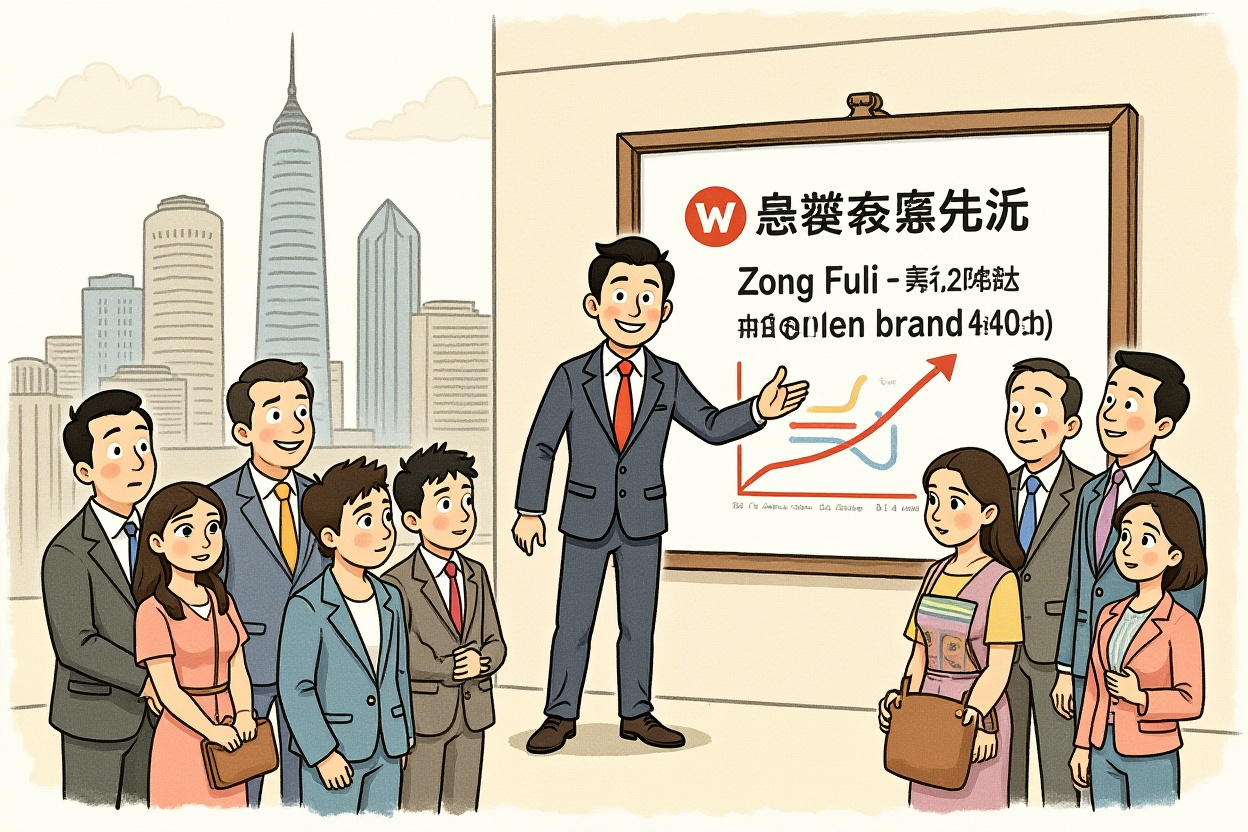The Great Unraveling: Internal Document Reveals Wahaha’s Structural Cracks
A leaked internal document has exposed fundamental fractures within China’s beverage giant Wahaha Group (娃哈哈集团), revealing that Hongsheng Group—controlled by Zong Fuli (宗馥莉)—will launch new brand ‘Waxiaozong’ (娃小宗) starting 2026, completely replacing the iconic Wahaha branding. This move represents more than a brand refresh; it signals a fundamental strategic shift that could redefine one of China’s most beloved consumer brands.
The timing coincides with the aftermath of founder Zong Qinghou’s (宗庆后) passing, raising questions about whether this de-Wahaha strategy represents voluntary transformation or forced adaptation. Industry analysts suggest this may be the most significant brand transition in China’s consumer goods sector in decades.
Ownership Complexities Drive Strategic Shift
The fundamental challenge lies in Wahaha’s ownership structure: Hangzhou Shangcheng District Culture, Commerce and Tourism Group holds 46% ownership, Zong Fuli controls 29.4%, and the Employee Stock Ownership Committee maintains 24.6%. Critically, the Wahaha trademark belongs to the group entity, requiring unanimous shareholder approval for any usage changes—a nearly impossible threshold given current tensions.
According to Hongsheng Group notifications, since the founder’s passing, the company has struggled to resolve numerous historical issues including:
- Employee stock ownership committee disputes
- Ongoing equity repurchase agreement litigation
- Trademark authorization legality questions
- Highly publicized family inheritance conflicts
Brand Value Versus Legal Reality
The Wahaha brand represents approximately ¥90 billion in intangible value, built over nearly four decades through iconic products like AD Calcium Milk and Nutri-Express. The emotional connection spans generations of Chinese consumers who grew up with the brand’s memorable advertising jingles and products.
Yet this valuable asset remains legally inaccessible to Zong Fuli without full shareholder consensus. Her previous attempt to transfer the trademark to her controlled Hongsheng Group was firmly rejected by majority shareholders, creating an untenable position for continuing operations under the Wahaha banner.
The Impossible Choice: Legacy Versus Liberty
Zong Fuli faces a classic innovator’s dilemma: continue fighting for control of a legacy brand with diminishing influence, or create something new unburdened by historical constraints. The de-Wahaha strategy represents her choice toward the latter, but the path forward remains fraught with challenges.
Market analysts note that China’s beverage sector has transformed dramatically since Wahaha’s dominance era. Today’s market features fierce competition from brands like Genki Forest (元气森林), Nongfu Spring (农夫山泉), and Dongpeng Beverages (东鹏饮料), with higher channel costs and fragmented consumer attention.
Waxiaozong: Brand Building From Zero
The new brand ‘Waxiaozong’ faces monumental challenges in establishing market presence. Applications filed in May 2024 show strategic intent, but brand building requires more than trademark registration—it demands consumer trust, emotional connection, and distribution networks that took Wahaha decades to develop.
Consumer research indicates concerning initial reactions:
- 64% of surveyed consumers perceive ‘Waxiaozong’ as a Wahaha sub-brand rather than standalone product
- Only 12% recognize the brand name without prompting
- 78% express preference for established brands in beverage purchases
Comparative Case: Jia Duo Bao’s Comeback Story
Some observers reference Jia Duo Bao’s (加多宝) successful rebranding after losing Wang Lao Ji (王老吉) rights to Guangzhou Pharmaceutical Holdings. However, critical differences exist: Jia Duo Bao had consumer sympathy and voluntary channel support following what was perceived as unfair treatment. Zong Fili’s situation lacks this emotional narrative, appearing more as strategic business separation than victimized departure.
Succession Legitimacy and Brand Identity
Zong Fuli’s leadership position derived partly from her status as ‘Zong Qinghou’s daughter’ but more importantly as the logical brand guardian who would preserve and enhance Wahaha’s legacy. Her dramatic resignation and return in 2023 reinforced this narrative of destined leadership.
The de-Wahaha strategy potentially undermines this legitimacy narrative. Abandoning the core brand risks perception of betraying the very legacy that justified her succession. Without Wahaha’s brand endorsement, convincing distributors to prioritize shelf space, maintaining employee morale, and competing against established rivals becomes significantly more challenging.
Stakeholder Perspectives Divide
Different constituencies view the strategy differently:
- Employees fear job security amid brand transition
- Distributors worry about consumer recognition of new products
- Shareholders concerned about valuation impacts
- Consumers nostalgic for familiar brands
Market Implications and Competitive Landscape
China’s beverage market reached ¥1.2 trillion in 2023, growing at 5.7% annually despite economic headwinds. The sector remains fragmented with top-10 players controlling only 38% market share, suggesting opportunity for new entrants but also intense competition for consumer attention.
Wahaha currently holds approximately 7.3% market share in non-alcoholic ready-to-drink beverages, ranking fourth behind Nongfu Spring (10.2%), Coca-Cola China (8.9%), and PepsiCo China (8.1%). The brand transition risks erosion of this hard-won position unless executed flawlessly.
Financial Institutions Watch Closely
Major investment banks have issued cautious assessments. Morgan Stanley notes: ‘Brand transitions in consumer staples historically underperform during initial years, with successful examples requiring substantial marketing investment and clear consumer communication.’ Goldman Sachs adds: ‘The Wahaha situation represents unique challenges given emotional consumer connections and complex ownership structure.’
Strategic Alternatives and Potential Compromises
Industry observers suggest several potential resolutions could emerge before the 2026 implementation date:
- Renewed negotiation for trademark licensing under modified terms
- Gradual phase-in allowing dual branding during transition
- Strategic investor introduction to resolve ownership deadlock
- Government mediation given Wahaha’s significance to Hangzhou’s economy
The Hangzhou municipal government has historical involvement in Wahaha’s development and may facilitate discussions given the company’s economic importance and employment impact.
Looking Forward: The 2026 Transition Timeline
With approximately 18 months until the planned brand transition, Zong Fuli’s team faces critical execution challenges:
- Q3 2024: Product development and testing
- Q4 2024: Production line conversion
- Q1 2025: Channel partner education
- Q2 2025: Marketing campaign launch
- Q4 2025: Inventory transition planning
- Q1 2026: Full brand switch implementation
The compressed timeline increases execution risk, particularly given need to educate thousands of distributors and millions of consumers about the brand change.
Investment Community Assessment
Portfolio managers monitoring Chinese consumer stocks express cautious optimism tempered by practical concerns. ‘The de-Wahaha strategy makes business sense given legal constraints, but execution will determine whether this becomes case study in successful brand transition or cautionary tale about legacy challenges,’ notes BlackRock’s Asian consumer analyst.
Final Analysis: Strategic Imperative or Forced Hand?
Zong Fuli’s de-Wahaha strategy represents both pragmatic response to legal realities and bold bet on brand-building capabilities. While necessary given ownership constraints, the path ahead remains exceptionally challenging in China’s competitive beverage market.
The ultimate success will depend on several factors: adequate marketing investment, clear consumer communication, distributor support, and most importantly, whether consumers embrace the new brand as legitimate successor rather than inferior substitute. The 2026 transition will represent one of China’s most watched corporate transformations, with implications for family businesses, brand management, and corporate governance nationwide.
For investors and industry observers, monitoring quarterly sales data, consumer sentiment indicators, and channel feedback will provide early signals about whether this radical de-Wahaha strategy can succeed against formidable odds. The coming months will determine whether Waxiaozong becomes the next great Chinese brand or cautionary tale about the challenges of brand transition.




